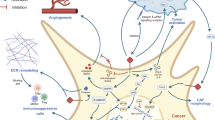Background and Purpose:
Low-dose radiotherapy (LD-RT) is known to exert an anti-inflammatory effect, but the knowledge of the underlying molecular mechanisms is still scarce. The authors have recently reported that transforming growth factor beta 1 (TGF-β1) essentially contributes to a reduced endothelial adhesion of mononuclear cells (PBMC) following LD-RT. Furthermore, TGF-β1 secretion was associated with the induction of the transcription factor nuclear factor kappa B (NF-κB). However, the time course of adhesion, TGF-β1 expression, and NF-κB activity following LD-RT has not been thoroughly investigated yet.
Material and Methods:
The human EA.hy.926 endothelial cell line (EA.hy.926 EC) was grown to 95% confluence. Immediately after stimulation with the pro-inflammatory cytokine tumor necrosis factor alpha (TNF-α), EA.hy.926 EC were irradiated with single doses ranging from 0.3 up to 3 Gy. Adhesion assays were performed 4, 12, and 24 h after irradiation. Nuclear extracts and culture supernatants were harvested after 4, 8, 12, 20, 24, 30, and 40 h. NF-κB DNA-binding activity was analyzed by electrophoretic mobility shift assays (EMSA) and TGF-β1 secretion by enzyme-linked immunosorbent assay (ELISA). The functional impact of TGF-β1 on the course of leukocyte/EC adhesion was analyzed by neutralizing TGF-β1 in parallel with stimulation/irradiation of the EA.hy.926 EC.
Results:
4 and 24 h after irradiation of EA.hy.926 EC in the dose range between 0.3 and 0.7 Gy, a reduced adhesion of PBMC compared to nontreated controls could be observed. However, 12 h after irradiation a relative maximum of adhesion (up to 30% increase) was seen at a dose of 0.3 Gy. TGF-β1 secretion and NF-κB DNA-binding activity displayed a similar biphasic kinetics of induction with a relative minimum 12 h after irradiation. Neutralization of TGF-β1 activity restored adhesion at 4 and 24 h after LD-RT of EA.hy.926 EC, but it did not influence leukocyte adhesion 12 h after irradiation.
Conclusion:
LD-RT of stimulated human EA.hy.926 EC is followed by a biphasic time course of NF-κB activity and an increased secretion of TGF-β1. The kinetics shows peak levels at 4–8 h and 24–30 h after LD-RT and results in a biphasic leukocyte/EC adhesion profile.
Hintergrund und Fragestellung:
Eine niedrig dosierte Strahlentherapie (LD-RT) zeigt klinisch einen antiinflammatorischen Effekt. Die zugrunde liegenden molekularen Mechanismen sind jedoch noch wenig untersucht. Die Autoren konnten kürzlich zeigen, dass “Transforming Growth Factor beta 1” (TGF-β1) zu einer verminderten Adhäsion von mononukleären Zellen (PBMC) an Endothelzellen nach LD-RT beiträgt. Dabei war die TGF-β1-Sekretion mit der Induktion des Transkriptionsfaktors “Nuclear Factor kappa B” (NF-κB) assoziiert. Die zeitliche Abhängigkeit der Adhäsion, der TGF-β1-Sekretion und der NF-κB-DNA-Bindungsaktivität nach LD-RT ist bisher allerdings kaum untersucht.
Material und Methodik:
Die humane Endothelzelllinie EA.hy.926 wurde bis zu 95% Konfluenz kultiviert. Sofort nach Stimulierung mit dem proinflammatorischen Zytokin Tumor-Nekrose-Faktor alpha (TNF-α) wurden die Zellen mit Einzeldosen zwischen 0,3 und 3 Gy bestrahlt. Nach 4, 12 und 24 h wurden dann Adhäsionsassays durchgeführt. Nukleäre Extrakte und Kulturüberstände wurden nach 4, 8, 12, 20, 24, 30 und 40 h gewonnen. Die Messung der NF-κB-DNA-Bindungsaktivität erfolgte mittels EMSA („Electrophoretic Mobility Shift Assay“), die TGF-β1-Sekretion wurde in einem ELISA („Enzyme-Linked Immunosorbent Assay“) bestimmt. Eine funktionelle Relevanz von TGF-β1 für den Verlauf der Leukozytenadhäsion wurde durch Behandlung mit neutralisierenden Antikörpern parallel zur Stimulation/Bestrahlung von EA.hy.926-Endothelzellen untersucht.
Ergebnisse:
4 und 24 h nach Bestrahlung aktivierter EA.hy.926-Endothelzellen war im Dosisbereich von 0,3 bis 0,7 Gy eine verminderte Leukozytenadhäsion im Vergleich zu einer unbehandelten Kontrolle zu beobachten. Überraschenderweise zeigte sich 12 h nach Bestrahlung ein relatives Adhäsionsmaximum (Anstieg um bis zu 30%) bei 0,3 Gy. Die TGF-β1-Sekretion und NF-κB-DNA-Bindungsaktivität wiesen eine vergleichbare biphasische Kinetik mit einem relativen Minimum 12 h nach Bestrahlung auf. Eine Neutralisation der TGF-β1-Aktivität führte zur Wiederherstellung der Adhäsion an EA.hy.926-Endothelzellen 4 und 24 h nach LD-RT, die gesteigerte Adhäsion 12 h nach Bestrahlung wurde hingegen nicht beeinflusst.
Schlussfolgerung:
Die LD-RT stimulierter humaner EA.hy.926-Endothelzellen führt zu einer biphasischen Zeitabhängigkeit der NF-κB-DNA-Bindungsaktivität und TGF-β1-Sekretion. Dabei zeigt die Kinetik relative Maxima nach 4–8 h und 24–30 h und resultiert in einem biphasischen Profil der Adhäsion von Leukozyten an die Endothelzellen.
Similar content being viewed by others
Author information
Authors and Affiliations
Corresponding author
Rights and permissions
About this article
Cite this article
Rödel, F., Schaller, U., Schultze-Mosgau, S. et al. The Induction of TGF-β1 and NF-κB Parallels a Biphasic Time Course of Leukocyte/Endothelial Cell Adhesion Following Low-Dose X-Irradiation. Strahlenther Onkol 180, 194–200 (2004). https://doi.org/10.1007/s00066-004-1237-y
Received:
Revised:
Issue Date:
DOI: https://doi.org/10.1007/s00066-004-1237-y




